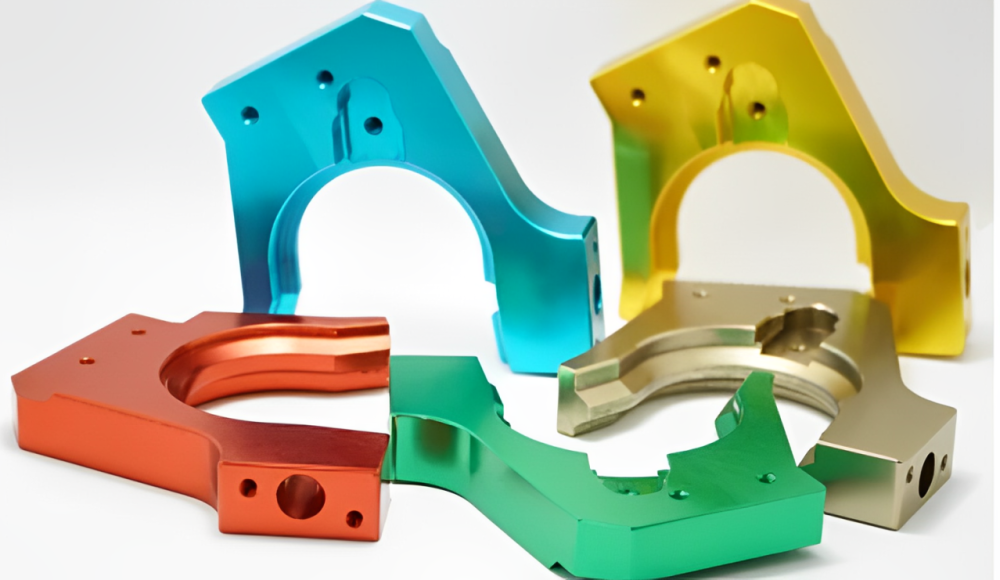アルミニウム陽極酸化 - さまざまな条件に耐える金属の能力を向上させる電気化学プロセス. これらの条件には着用が含まれる場合があります, 腐食, 表面の一般的な硬化. この手法は、航空宇宙で最も効果的です, 自動車, 新しい複合材料の軽量材料基準が望ましい建設業界. 酸化物層を肥厚することにより陽極酸化作用により、アルミニウムはそれよりも便利になります. 記事上で, 陽極酸化アルミニウムとは何かを学びます, 使い方, そして、この手法の使用に関する重要な詳細.
陽極酸化アルミニウムとは何ですか?
陽極酸化アルミニウムは、厚い天然酸化物層を与える電気化学プロセスです. この薄い酸化物層は障壁として機能し、腐食保護を改善します, より良い表面の硬さ, そして、カラフルな陽極酸化仕上げの有効性. 陽極酸化プロセスは同じものと同じものを提供します アルミニウム, つまり. 鋼へのinox. また、耐久性と美しさが非常に重要なアプリケーションでアルミニウムをより便利にします.
完全な陽極酸化アルミニウムプロセス
それで, 以下は、アルミニウムを陽極酸化する段階的なプロセスです:
1. クリーニング
アルミニウムを最初に洗浄して汚れを除去します, つまり. 陽極酸化プロセスに影響を与える可能性のあるほこりやその他の粒子.
2. 前処理
これには、トゥイールの使用が含まれます (砂または研磨) または化学的に反応性のあるプロセス (エッチング) 陽極酸化の準備ができています.
3. 陽極酸化処理
自動車設計で, アルミニウムは酸性電解質浴に浸されています, そして、私たちは電流を通過させることを許可します. 最終的には、より良い保護のために天然の酸化物層が構築されます.
4. 着色 (オプション)
染料や色素の多孔質酸化物層に異なる色を組み込むことができ、人間の最高の色を得ることができます.
5. シーリング
陽極酸化の最後の層は、元の多孔度を最小限に抑えるために密閉されています. それは、色を増やすソリューションの保持に加えて、腐食に対する耐性を高めるのに役立ちます.
陽極酸化アルミニウムについて知っておくべき8つのこと
陽極酸化アルミニウムについて知っておくべき重要なことのいくつかは次のとおりです:
1. 耐食性の増加
陽子化するアルミニウムは、金属を湿気や化学物質から保護する保護層である厚い天然酸化物層を浸します. これにより、構造が外部アプリケーションなどの要素に直面するアプリケーションに適しています.
2. 表面硬度が向上しました
陽極酸化はアルミニウムを強化し、アルミニウムの表面をひっかきまたは着用に耐性にします. この機能は、主に「取り扱い」または「機械的にストレスを受けた」製品に適しています.
3. 審美的な種類
多孔質酸化物層が染色を受け入れることができることが確立されたため、陽極酸化によって色付けされることもあります. これにより、陽極酸化されたアルミニウムは、市場で多様性を与えるためにデザインに適しています.
4. 環境への親しみやすさ
陽極酸化は、処理するときに有害な化学物質を生成しないため、環境に優しいです. その過程で有毒物質を使用していないため、プロセスを採用するのは産業にとって環境に優しいです.
5. 導電率が低下します
陽極酸化処理 アルミニウムの電気コンダクタンスを最小限に抑えます. それはそうかもしれません, 特定のアプリケーションで不利な属性になります. この導電率の変化は、電子機器のアプリケーションを減らすことができます.
6. 厚さの制御
酸化物層の厚さは陽極酸化中に簡単に調節されるため、使用される機能に応じてさまざまなレベルの保護と強度を提供できます。.
7. 非多孔質の仕上げ
陽極酸化手順は、陽極酸化されていない金属表面よりも掃除が簡単な非多孔質の表面を生成します. 陽極酸化アルミニウムは、徹底的な洗浄が避けられない食品や医療装置に最適です.
8. 軽量でありながら強い
陽極酸化されたアルミニウムは、その軽量特性を変えません, しかし、それは余分な耐久性と錆からの保護を獲得します. これにより、航空宇宙や自動車などのセクターで使用するために非常に汎用性が高くなります.
陽極酸化アルミニウムの用途
- 航空宇宙産業: 密度が低く、NMAEは耐性耐性であるため、航空機の部品に適用されます.
- 建築構造: 陽極酸化アルミニウムは、カーテンとファサードのデザインで広く使用されています, ウィンドウフレーム, および屋根システム.
- 自動車産業: ある程度のタフネスと美しさが必要な車の部品で使用される.
- 家電: 陽極酸化アルミニウムはスマートフォンまたはラップトップに洗練された仕上げを与えます, また、エレクトロニクス業界にアプリケーションがあります.
- 家庭用品: 陽極酸化アルミニウムは、材料の信頼性とさまざまなルックスのために、キッチンの調理器具から照明器具までどこでも使用されます.
陽極酸化アルミニウムの長所と短所
利点:
- 高い腐食抵抗.
- 耐久性と硬度の観点から、上記のパラメーターの傾向を改善しています.
- 耐久性のある魅力的な表面コーティング.
- 環境に優しい製造プロセス.
- 靭帯ですが、携帯電話の製造に使用される強力な素材.
制限事項:
- 電気伝導能力の低下。,
- アルミニウムとその合金のみに制限されています.
- 実際のファイルとデジタルファイルの間に異なる色を持つ可能性があります.
- 屋外スペースで使用する場合、これは頻繁に掃除する必要があるかもしれません.
- アルミニウムと比較して比較的コストがかかります, 治療を受けていません.
アルミニウムの陽極酸化中に課題が発生します
アルミニウムの陽極酸化プロセス中に直面できるいくつかの課題を紹介します:
- カラーバリエーション: 同じ色の色合いを大量に取得することも困難です, これは染料の問題かもしれません.
- 表面欠陥: 陽極酸化プロセスが完了すると、ベースメタルで観察された汚れまたはスクラッチが非常に目立つようになるため、陽極酸化技術を使用する場合は非常に注意する必要があります.
- シール品質: シーリングの問題は、腐食保護レベルが低くなり、日陰を変える可能性があります.
- 厚さの均一性: 複雑な形状のある構造に特定の酸化物層の厚さを一定にすることは時々困難です.
結論
結論は, アルミニウム陽極酸化は、最も多様で効率的な方法の1つです. それで, 基本材料の特性をうまく使用することです, 強度と腐食保護の追加. それは多くの分野で重要であり、審美的な目的で使用されています. それにもかかわらず, 陽極酸化に固有の欠点と剛性を学びます, 特に高精度と同一の酸化物層の厚さのために. プロセスを適切に制御して使用する場合, 陽極酸化されたアルミニウムは、機能的および審美的な目的に役立ちます, それが多くの用途でとても人気がある理由です.
よくある質問
Q1. どのような目的のために、アルミニウムに適用されます?
陽極酸化は腐食保護を改善します, 硬さを拾います, 業界でカラー画像を作成します, つまり. 航空宇宙, 自動車, そして建設.
第2四半期. 陽極酸化とは何ですか?
陽極酸化は、アルミニウムを酸に入浴させ、その後、その表面に厚く保護された酸化物層を発達させるために電流を覆うことを覆います.
Q3. アルミニウムにとって有害な陽極酸化剤です?
アルミニウムの陽極酸化の機械的特性に関しては、金属の本質的な特性を変えません. それは摩耗に対する表面の硬さと表面抵抗を高めます.
Q4. 陽極酸化はどれくらい持続しますか?
陽極酸化されたアルミニウムは非常に長いライフサイクルを持つ傾向があるため、よく維持されている場合に長期的なプロジェクトに最適に適しています.
Q5. 陽極酸化アルミニウムと通常のアルミニウムの違いは何ですか?
陽極酸化アルミニウムには酸化物の天然層があり、後者にはありません. それで, 陽極酸化アルミニウムは、通常のアルミニウムよりも腐食や表面の損傷に対してさらに耐性があります.







1 「」について考えました8 アルミニウムの陽極酸化について知っておくべきこと”